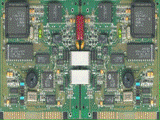Electrical & Computer Engineering, Department of
Date of this Version
2011
Citation
2011 IEEE Global Telecommunications Conference (GLOBECOM 2011); doi: 10.1109/GLOCOM.2011.6134556
Abstract
Micro-electronic industry has been boosting the capability of wireless mobile devices on full-scale. However, battery, as the only power source of most mobile devices, is experiencing a relatively slow development. Therefore, how to optimally utilize the limited battery energy on mobile devices under a predefined performance requirement becomes a critical issue. On the other hand, it is still unclear that how the battery capacity consumption is allocated on different working pattern of a specific video codec under various tempo-spatial scales and parameters, which has posed a design challenge on power management on multimedia communication system. Furthermore, an optimization method is needed to be proposed and experimentally tested to achieve the tradeoff between the computational complexity and the distortion of multimedia delivery in order to discover the relationship and interaction between computational parameters of multimedia communication and battery capacity consumption. In this paper, we set up a measurement system to reveal the battery capacity consumption behavior and its footprinting in a video delivery system using H.264 codec. A systematic optimization framework which jointly considers the coding parameters and transmission parameters is proposed to achieve the tradeoff between battery capacity consumption and quality of services (QoS). Experimental results indicate insight of relationship between multimedia communication parameters and battery capacity consumption under a desired distortion requirement which provides a guideline of optimization for applicable multimedia system.


Comments
Copyright 2011 IEEE